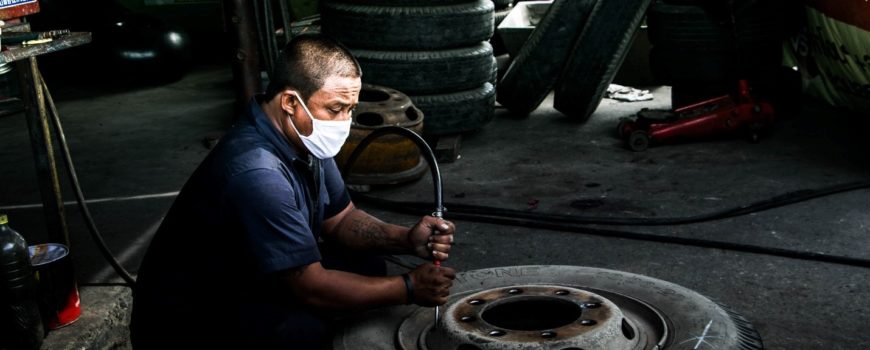Jumping into a new business venture can be a risky proposition, even in the best of circumstances. The excitement of going out on your own can often outweigh the negatives, but doing so in a tough economic environment often amplifies the risk, to make the process downright stressful.
The COVID-19 pandemic certainly thrust the country into an economic downturn for a large stretch of 2020 and continues to provide uncertainty heading into 2021. However, there are many businesses across a variety of industries proving that some of the necessary changes brought by the health crisis have actually strengthened their position, offering a blueprint for the best business model to address the current health needs and economic landscape.
Some of these changes require nimble pivoting to survive the crisis in the short term, while others are using this period as a chance to alter their long-term strategies well beyond the pandemic.
Remote Work and Limited Contact
The largest disruption in the usual business environment has been the need for distance. Social distancing hasn’t only been a charge for the public at large but a necessity for businesses, employees, and customers alike since the COVID-19 outbreak in March.
Employees must be provided a safe workplace, if in the workplace at all. Studies show that since the pandemic broke out in earnest, workers across the nation have grown an affinity for working from home — with 72 percent of respondents saying they’d prefer to work remotely, at least two days per week, even after the pandemic.
While not always a positive across the board, the pandemic has highlighted opportunities for remote work that many business owners can offer their employees. Not only does that keep the workforce safe, but also provides a different environment for productivity.
Adjusting Performance Targets and Management
Considering the necessary changes in work settings, it is also important for managers to develop fitting ways to manage performance. Employees and employers have all been forced to adapt, finding a balance in productivity without many of the factors that once allowed for “business as usual” before the pandemic.
Consumer habits have rapidly transformed, both in spending and setting, even quicker than was already taking place pre-pandemic. That has likely altered what was previously considered a success against performance targets. That means it may be more important than ever to pinpoint useful, meaningful KPIs for businesses.
With communication at a premium for even the most successful businesses, those looking to pivot an existing model — and those set on building their own — will have to be more focused on efficient team and project management in a world ruled by distance.
Mobility Meets Consumer Needs
At the same time, consumers have as much need for limiting contact as do employees. Businesses whose viability rests on in-store traffic, such as restaurants or retail, saw a dramatic shift in the behavior of their customers.
While the onset of the pandemic was relatively immediate, the duration of the resulting economic effects remains uncertain. McKinsey & Company’s ongoing research on consumer behaviors shows that nearly two-thirds of Americans are still concerned about doing “normal” out-of-home activities.
The best business model for current circumstances is one that addresses those concerns, providing a service to consumers where they are most likely to engage. Innovation is key.
Restaurants with efficient drive-thru, delivery, or carry-out options have weathered the circumstances better than those without. Small businesses got creative with contactless deliveries. Many other businesses in various industries created new products or found new ways to offer their services.
And even before COVID-19 hit, some were well-positioned to thrive in a new, distant world.
Find the Right Pandemic Positioning with Tread Connection
Business models built on mobility offer a distinct opportunity to succeed through the pandemic and survive economic insecurity. Not only can they reach customers in a comfortable setting and quickly build brand loyalty, but they can offer that same comfort to employees when they go to work.
Tread Connection is a mobile automotive franchise built for the public health and economic uncertainties. Already carrying the advantages of a recession-proof industry such as auto service, it can boast the added benefit of meeting the needs for mobility and distance by offering that service at the customer’s home.
Car troubles don’t magically disappear because of a health crisis. However, providing an option that eliminates the need for visiting a waiting room and limits face-to-face contact gives the consumer an essential service with essential peace-of-mind.
Find out more about Tread Connection franchising opportunities and its positioning as one of the best business models for those motivated to build success in the age of COVID-19.

